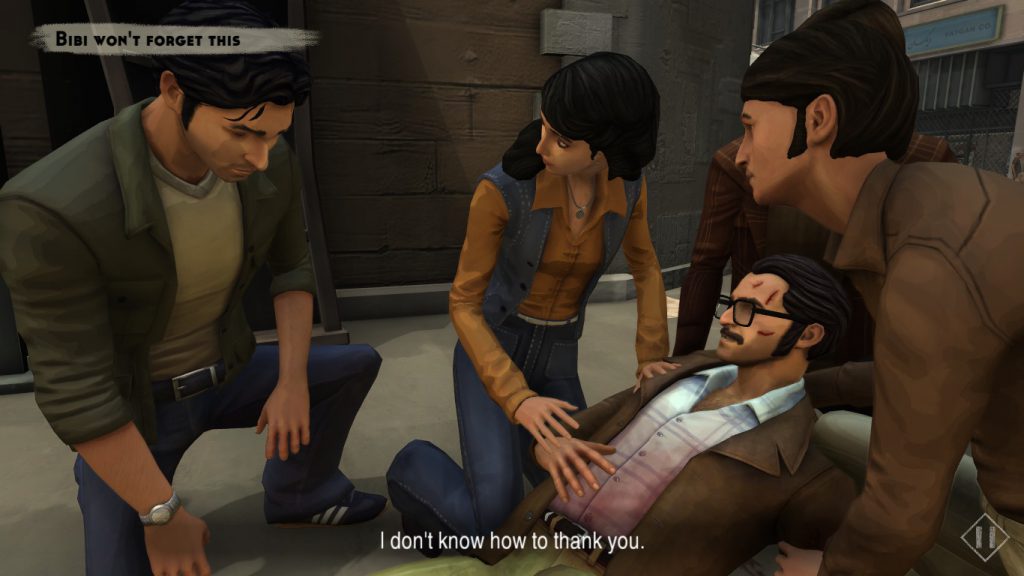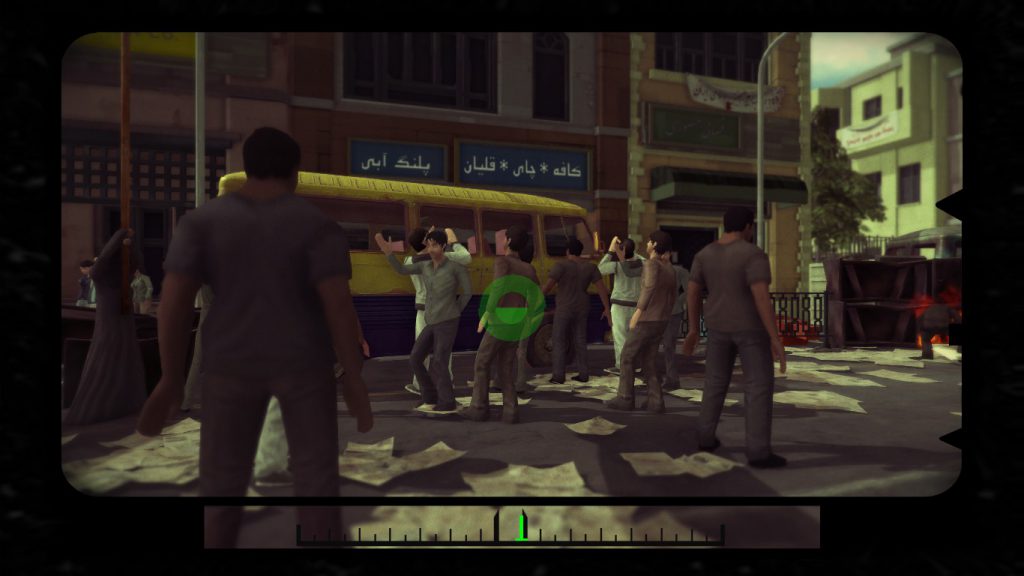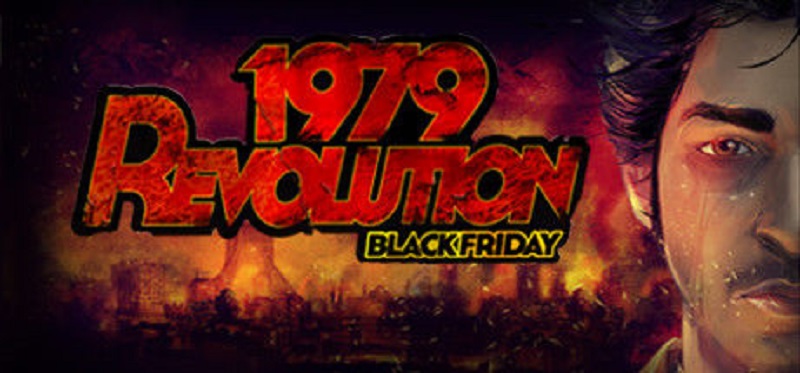In 1979, the Iranian people were up in arms. The unpopular, corrupt regime of the Shah Mohammad Reza Pahlavi was on its last legs, and would be forced out in favor of the Islamic Republic of Iran, led by Ayatollah Khomeini. Undoubtedly, the Iranian Revolution is one of the most important events in the Middle East in the 20th Century, but it’s also an event that doesn’t get studied or thought about much over here, outside of the American hostages that were taken during the chaos. Today, though, we’ll be looking at a game that puts you right in the powder keg from an Iranian perspective, 1979 Revolution: Black Friday, by iNK Stories.
1979 Revolution: Black Friday casts you as Reza Shirazi, a young photographer who has returned to Iran after studying overseas in Europe and finds himself caught up in the turmoil leading up to the Iranian Revolution. Reza is caught in the middle of a swirling whirlwind of factions looking to overthrow the Shah and seize power: Communists, nationalists, fundamentalists, and the Mujaheddin, amongst others, not to mention wrestling with family loyalty; Reza’s parents are well-off supporters of the Shah, and his brother works for SAVAK, the Shah’s security force, who believe very much in the concept of guilt by association.
What this means in practical terms is that you’ll have to make some tough choices about where your allegiance lies, and indeed, that decision making is the biggest aspect of the gameplay itself; you’ll be faced with a lot of dialogue choices with very short windows in which to weigh your options. What’s more, the characters you interact with remember your previous responses, and the decisions you make affect the outcome at the end. Of course, you’ll also have to decide what’s important to you yourself; do you promote a nonviolent approach to dissent or do you choose a more…direct approach? Do you cast in your lot with your new revolutionary acquaintances or do you side with your family who supports a dying regime? It’s a very simple mechanic, but one that’s executed extremely well over the course of the game.

Aside from the dialogue choices, the other core gameplay pieces are a handful of Quick-Time Events, where you’ll have to perform tasks like providing first aid to a wounded compatriot, or dodging frantic protestors and obstacles after the Shah’s army shows up to forcibly break up a demonstration, and a photography mechanic, where you have to time your shots to get them in good focus. Though very few of these more action-oriented moments can actually result in you getting killed and having to restart, they oftentimes can lead to the death of another character, further altering the storyline.
Perhaps the most stark quality you’ll notice about the story is the very neutral, very ambiguous approach to the proceedings. Unlike a lot of games where you’re faced with ideological choices and moral questions, there’s not that kind of “wink-wink, nudge-nudge” storytelling that actively favors one choice as “good” and the other as “bad.” One character is ready and willing to commit violence to further the revolution, and while you may disagree with his methods or sympathize with him because of his personal reasons, he’s not presented as a loose cannon or a madman, he’s just different. Another character is an outspoken supporter of Khomeini, but he’s not a anti-American stereotype, just a devout Muslim who believes in the potential of a more fundamentalist government, and it’s refreshing to see a game where you, not a team of writers, decide whether a character’s intentions are truly noble.
One feature that I particularly enjoyed was that the designers sought to parallel what you’re seeing in the game with what happened in the actual Iranian Revolution. For example, at one point, you’re asked to take pictures of a massive crowd of protestors on the street, and when you take the picture, you see it juxtaposed against a real-life version of that exact scene.
That picture you just took of an activist standing over the torn-down statue of the Shah? Here’s a real picture from 1979 of someone in that same pose, and furthermore, these pictures are also accompanied by some extra information about the events in question, as well as plenty of background material about Iranian history and culture, like the etiquette of being offered tea, or the importance of Iranian New Year. Now, you’re not required at any point to read any of these snippets or listen to any of the speech excerpts you can obtain, but odds are, if you buy this game given its very unique setting, you’re probably interested enough in the subject matter to give them a looksie.
Another highlight for 1979 Revolution: Black Friday is the presentation. The voice acting here is quite good, and the designers managed to strike a good balance between having the Iranian characters speak English for the benefit of the player and Farsi for the sake of realism. This is also a game that’s designed to be played while wearing headphones, and while it’s not mandatory by any stretch, it really adds to scenes where you’re in the midst of a massive mob of demonstrators or where you’re listening to characters arguing with each other on either side of you. Even small incidental sounds like passing a car with its radio turned on is enhanced by using headphones, so if that’s an option for you, that’s the way to go. Visually, while the graphics aren’t cutting-edge, per se, there’s a tremendous level of detail, and while the art style looks a little…washed-out, I’d guess you’d say, it actually fits quite well given this is a game about events that took place almost forty years ago.

There are some downsides to 1979 Revolution: Black Friday. For one, this is a rather short game. It’s broken up into nineteen chapters, although some chapters literally run few only a few minutes, and you can whip through an entire playthrough in a couple of hours, although the branching storylines and different outcomes give it some serious replay value. As I said before, the action sequences feature a lot of Quick-Time Events, so if you happen to hate those, well, there’s nothing here to change your mind. Also, while the story is exceptionally well-told, it’s not exactly the great story of triumph you might be looking for. You don’t exactly overcome the Shah’s army and march triumphantly into his palace to depose him, you are very much a bit player in the revolution, and as such, you might not see how exactly you’re helping the cause. That said, it’s a much more realistic depiction of events than what could have been, and I feel it’s more effective because of it.
1979 Revolution: Black Friday is certainly a fascinating concept. There aren’t exactly a ton of games that cover this kind of subject matter, and the gimmicks of varying outcomes and long-term NPC interaction are certainly intriguing. It manages to sit on the fence between being a straight re-telling of factual events and being historical fiction quite well, and the extra reading material about Iran’s culture and the events surrounding the revolution are a nice bonus if you’re interested in that sort of thing. It’s not a long epic game, but at the same time, it certainly doesn’t overstay its welcome and you don’t reach the end and feel like you were shortchanged in terms of plot. If you’re a fan of adventure games, or if the setting piques your interest at all, I’d definitely recommend it, but if you’re not, you’re not quite missing out on a game-changing…um…game.
Current Price – $5.99
Is It Worth It? – If you dig adventure games or if you’re interested in seeing a major world event unfold from their perspective, yes. If not, maybe wait for a sale.
